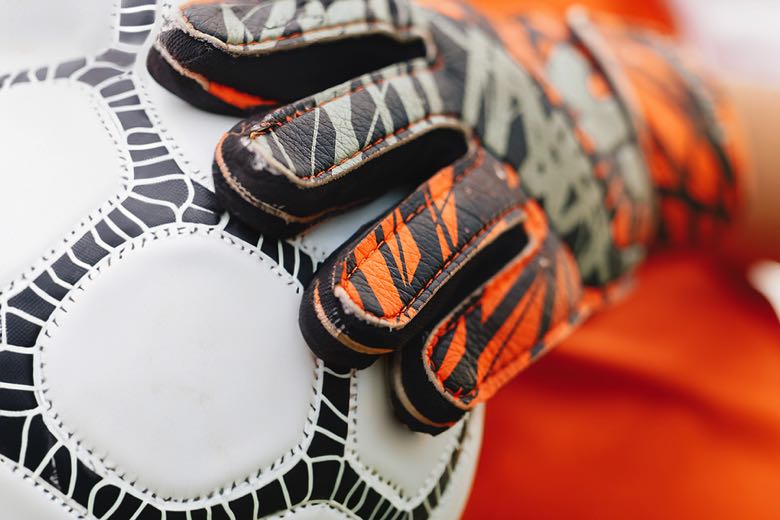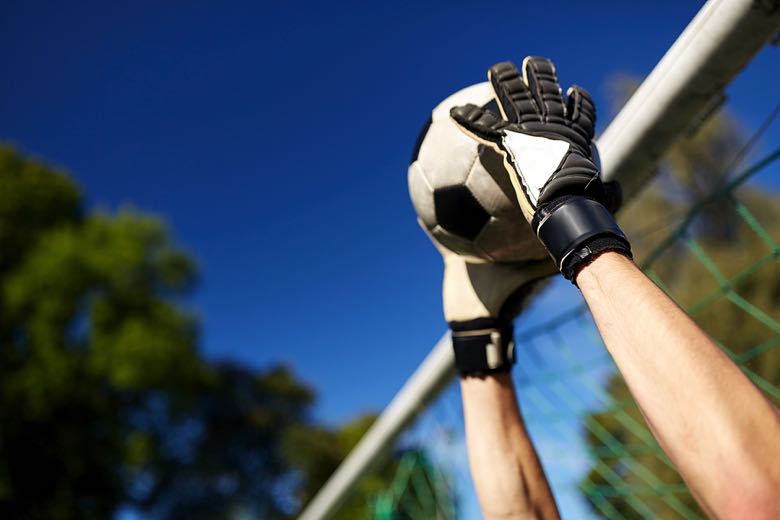Picture the scene: a football team is winning a game, the clock is ticking down and the ball finds its way into the arms of the leading team’s goalkeeper. And he or she just stands there, smirk on their face, holding onto the ball and helping the sands of time drain away from the game.
That wouldn’t be very sporting, would it? Happily, there are rules that prevent a goalkeeper from holding onto the ball for an indefinite period of time.
What Is the Six Second Rule in Football?
As ever in these situations, we defer to our good friends at the International Football Association Board (IFAB), the organisation tasked with maintaining and updating the official rulebook of the beautiful game. They dedicate a whole section of their rules to goalkeepers, specifically what they can and can’t do. One of the things they are prohibited from doing is holding onto the ball for too long.
It is, as per Law 12.2, considered an offence if the keeper: ‘controls the ball with the hand/arm for more than six seconds before releasing it.’ So that’s the six-second rule explained, which is nice and straightforward (not always the case with football’s rulebook).
As per IFAB’s definition, a goalkeeper is considered to be in ‘control’ of the ball when:
-
- The ball is held in both hands
The ball is held between a hand and a surface (i.e. the ground, their torso, a goalpost)
- The ball is held in an outstretched, open hand
- The goalkeeper is bouncing the ball on the ground or throwing it in the air to themself
The punishment for exceeding the six second allocation is an indirect free kick, a set piece that we’ve written about on this very site before. In short, a goal cannot be scored from an indirect free kick unless another player touches the ball after the taker and before the ball hits the back of the net.
One of the confusing things about the six-second rule is that there isn’t an official countdown clock timing the goalkeeper in possession – it’s more of a notional thing, with the referee given the discretion to punish the GK if they hold onto the ball for an inordinate length in a bid to waste time. So it’s not a hard-and-fast rule by any means – just a guide for the match officials to use.
Why Was the Six-Second Rule Introduced?

Two tournaments in the history of the beautiful game did more than any ever to change football’s rulebook forever: the World Cup in 1990, and the European Championships of 1992. Both of these events were soured by time wasting. Players would pass the ball back to their goalkeeper, who would wait until the very last second before an opponent approached them before scooping up the ball.
Goalkeepers were handling back passes, throw ins and anything else for that matter, before rolling around on the floor like they’d been sniped. Six seconds? Sometimes it felt like six minutes before the keeper released the ball at these tarnished tournaments.
Realising that such escapades were ruining football as a spectacle, the sport’s authorities met to discuss solutions – in 1992, the back-pass rule was introduced for the first time. But goalkeepers were still able to exhibit some dark arts, not least the ability to hang on to the ball for a seemingly endless amount of time. So IFAB signed off on the six-second rule in 1998, bringing an end to the reign of terror of goalkeepers.
Does the Six-Second Rule Actually Exist Anymore?
When is a rule not a rule in football? After being introduced for the first time, referees were very much on point when it came to counting out those six seconds – goalkeepers too were diligent in releasing the ball within their allotted timeframe.
Although there wasn’t too many high profile instances of goalkeepers being punished, one huge game between the American and Canadian women’s teams at the Olympic Games of 2012 would be shaped by the law – Canada’s keeper, Erin McLeod, held onto the ball for too long, the United States were awarded a free kick and, a few moments later, won a decisive penalty from that original set piece.
It happened again in the Europa League in 2015, when Liverpool goalkeeper Simon Mignolet held onto the ball for 22 – yes, you read that correctly – seconds. He was rightly punished with an indirect free kick, from which opponents Bordeaux would score.
As the years have passed, it feels as if the six-second rule has simply disappeared into the ether – watch any Premier League game, for example, in the modern era and you can be sure that a goalkeeper will hang onto the ball for more than six seconds….with no punishment forthcoming. Take a look for yourself this weekend! The rule is still very much part of the IFAB legislation, but it’s actually implementation appears to have fallen by the wayside.
Can Goalkeepers Pass to Themselves?

There is, in theory, a work-a-round to the six-second rule anyway: a goalkeeper could hold onto the ball for six seconds, before throwing/kicking it a short distance away before retrieving it again. However, the clever clogs’ at IFAB have already thought about that, so in-line with their introduction of the six-second rule, they brought in a host of other amendments designed to stop opportunist goalkeepers from bending the rules to their will.
As part of Law 12.2, the goalkeeper will be punished with an indirect free kick to the other team if they ‘touch the ball with the hand/arm after releasing it and before it has touched another player.’ Therefore, they cannot throw or kick the ball to themselves to break the six-second count, although there are some ‘tricks’ they can use – lobbing the ball to a defender, who then heads it straight back to them, would still be allowed.

